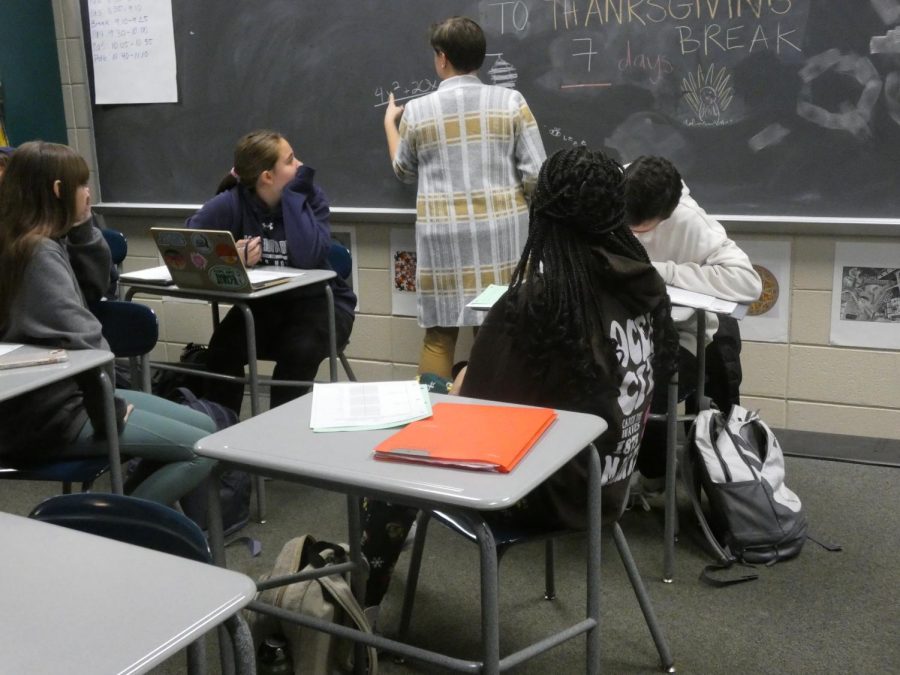Teachers Falling Behind in the Blocked Schedule
Teachers at Marriotts Ridge who teach the same curriculum for their 4A and 4B classes have had difficulty keeping their students on the same track. With fourth-period classes being taught every other day for 90 minutes to different students, teachers are opening up about how they feel about this situation and how it has affected them.
Ms. Miller teaches Principles of Business and Management to both of her fourth-period classes. Miller thinks the difference between her 4A and 4B is the number of students enrolled in her class.
“I think the biggest difference between the two courses depends on how many students are in the class. Right after Homecoming was when I saw the biggest shift in where the classes were because certain classes had more students than others,” Ms. Miller said.
Teachers go over the same material in the same amount of time with their fourth-period students, but often find difficulty in keeping both classes at the same pace.
AP Literature teacher, Mr. Miller, believes that the schedule can affect students since they are likely getting more work than the regular 55-minute block classes might get.
“I think taking a block class in itself is different, [in the] fact that you don’t have it every day. I think it takes a little bit more discipline to be successful in a block class, especially if you’re a procrastinator. You’re getting twice as much work, so I think that’s more difficult,” Mr. Miller said.
Math teacher Mrs. Scott thinks her block schedule students might not always get all the information they need.
“So the problem is when you have your 4A, you’ve taught fresh once, but for my 4B sometimes I’ll forget and I’ll think ‘wait did I say that, did I not say it? Did I cross over, did I get that question?’ I forget certain things,” Mrs. Scott explained.
Despite many teachers struggling to balance both periods, some staff members do not mind teaching the same subject for the full 90 minutes. Science teacher, Ms. Kol, prefers teaching her Anatomy & Physiology class during those periods because she gets more time for students to be productive.
“For twenty years I’ve taught 4A and 4B; I actually requested it. I don’t have issues with keeping the two on pace unless there are a lot of snow days that fall on one day more than another but I’ve learned to work around it,” Ms. Kol said. “I think teaching requires a lot of flexibility so I run with that. I like the block periods because of the time I have in those periods to do labs, dissections and activities.”
To work around the challenge, teachers have created various methods to keep themselves organized.
According to the University of Rochester, making lists is one of the top five methods of staying organized. To keep track of lesson plans, Mr. Miller writes lists of his plans and notes on different activities and resources, so he won’t forget to mention important details to his students.
“I’m a big list maker so that’s one part of it; part of it is also looking at ‘okay what are the activities and resources that I have, how long is it going to take’? Another part that seems silly is jotting down the notes at the end [of class] to see where I stopped. I still do this and I’ll say [to my students] ‘have I talked about this or have I said this?” Mr. Miller stated.
Mr. Miller also keeps himself organized by chatting with his students.
As the school year continues, and the 90-minute period stays the same, the staff at Marriotts Ridge hope they can help their students stay on track.

Hello! My name is Sidrah, and I'm a senior! This is my fourth and final year of journalism, and I'm a copy editor. Outside of school, I love driving around,...







